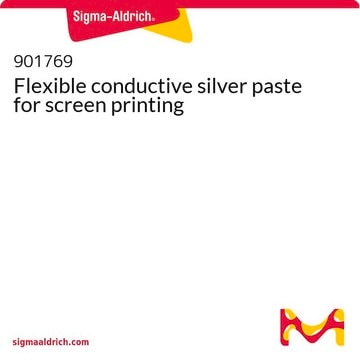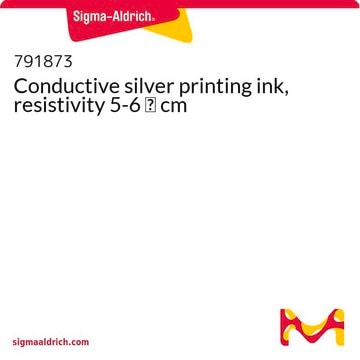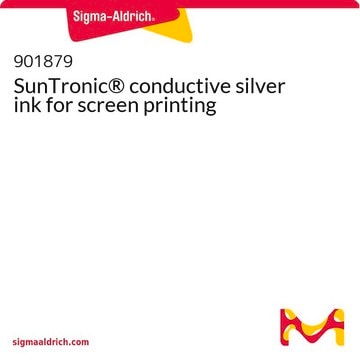791512
Platinum paste, screen printable
Sinónimos:
Greatcell Solar PT1 platinum paste, Pt paste, conductive paste
About This Item
Productos recomendados
form
paste (Amber)
viscosity
2500-4500 mPa.s (Analysis carried out at 20°C with 20mm 4 degree cone/plate; 40 s-1)
storage temp.
2-8°C
InChI
1S/Pt
InChI key
BASFCYQUMIYNBI-UHFFFAOYSA-N
Categorías relacionadas
Application
PT1 Platinum Paste is oil-based and formulated to be applied using a screen printer; providing films with excellent uniformity; performance and reproducibility; and can be used for DSSC polot production.
After drying; this paste must be fired at or above 420°C. This results in uniformly distributed platinum nanoclusters; providing good transparency and high catalytic activity for the electrochemical reduction of I3- to I-.
Suggested Mesh Screen: 100T
Legal Information
Greatcell Solar is a registered trademark of Greatcell Solar Materials Pty Ltd
signalword
Danger
hcodes
Hazard Classifications
Eye Dam. 1 - Resp. Sens. 1 - Skin Irrit. 2 - Skin Sens. 1
Storage Class
10 - Combustible liquids
wgk_germany
WGK 1
flash_point_f
194.0 °F
flash_point_c
90 °C
Certificados de análisis (COA)
Busque Certificados de análisis (COA) introduciendo el número de lote del producto. Los números de lote se encuentran en la etiqueta del producto después de las palabras «Lot» o «Batch»
¿Ya tiene este producto?
Encuentre la documentación para los productos que ha comprado recientemente en la Biblioteca de documentos.
Los clientes también vieron
Artículos
Dye-sensitized solar cells (DSCs) are 3rd generation solar cells combining the promise of high efficiency with low production costs.
While dye sensitization as the basis for color photography has been accepted for a very long time,1 attempts to use this principle for the conversion of solar light to electricity generally had resulted only in very low photocurrents, below 100 nA/cm
Professors Tokito and Takeda share design principles and optimization protocols for organic electronic devices, focusing on flexibility and low cost.
Progress in solution-processed functional materials leads to thin-film optoelectronic devices for industrial and consumer electronics.
Nuestro equipo de científicos tiene experiencia en todas las áreas de investigación: Ciencias de la vida, Ciencia de los materiales, Síntesis química, Cromatografía, Analítica y muchas otras.
Póngase en contacto con el Servicio técnico












